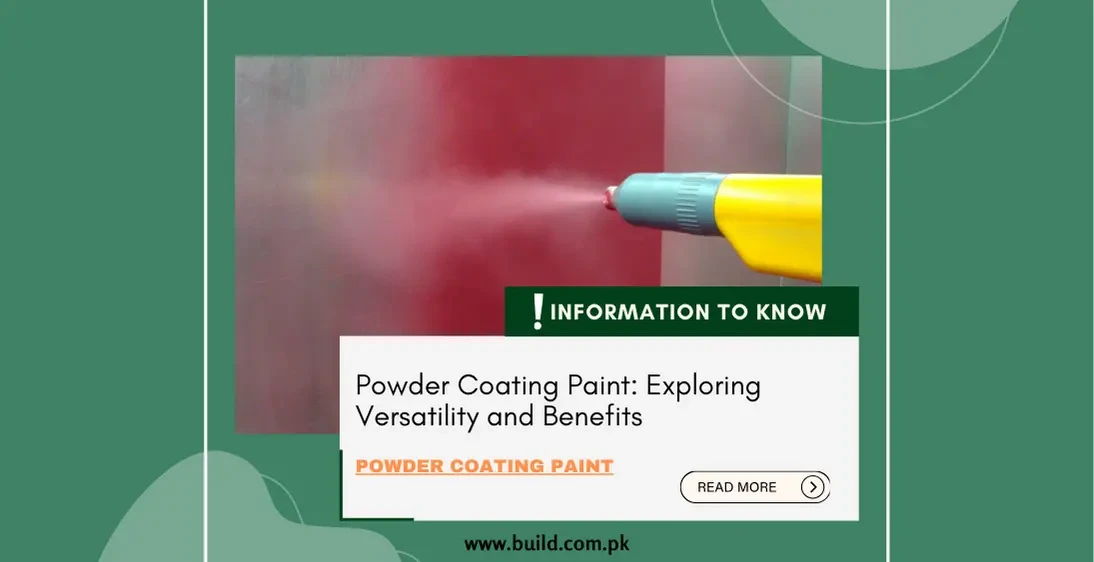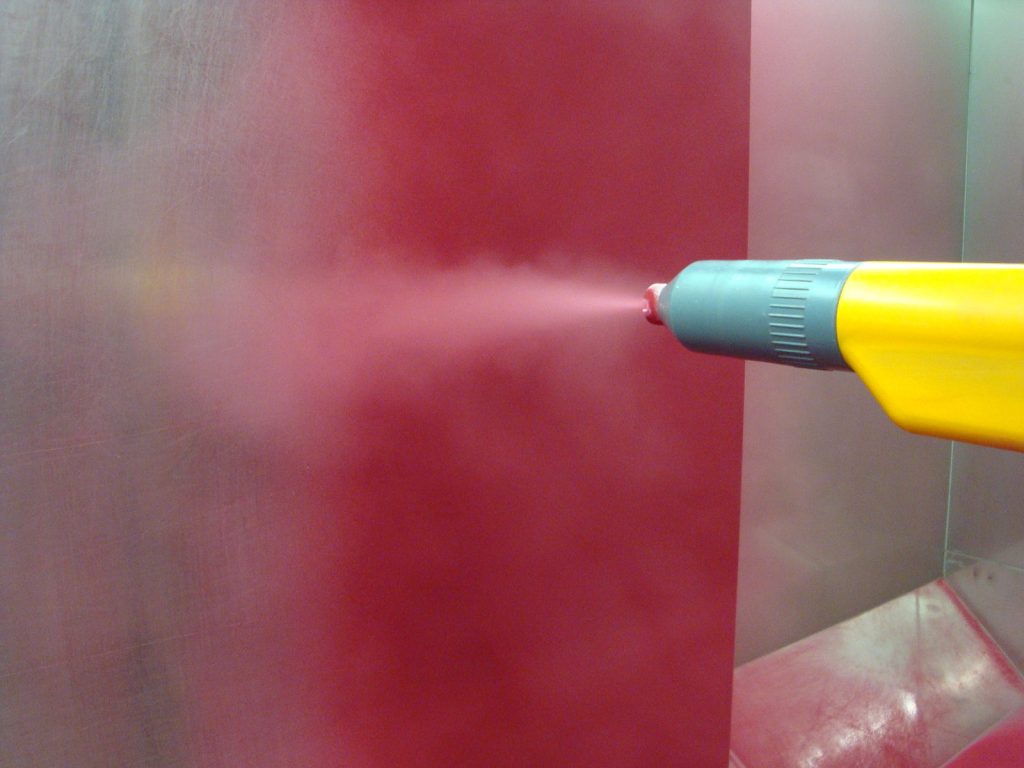Powder Coating Paint: Exploring Versatility and Benefits

Introduction:
Powder coating paint is a highly versatile and durable
finishing option used across industries for a wide range of applications. Its
unique formulation and application process make it a preferred choice for
achieving high-quality, long-lasting finishes on various substrates. In this comprehensive
guide, we'll delve into the characteristics, advantages, applications,
application methods, and environmental considerations associated with powder
coating paint.
Characteristics of Powder Coating Paint
Powder coating paint is a dry finishing process that involves
electrostatically applying finely ground particles of pigment and resin onto a
substrate. Here's an in-depth look at the key characteristics that contribute
to its popularity and versatility:
Durability and Resistance:
One of the primary advantages of
powder coating is its exceptional durability and resistance properties.
Powder-coated surfaces are highly resistant to corrosion, abrasion, chipping,
scratching, and fading, making them ideal for demanding applications where
durability is paramount.
Colors and Finishes:
Powder coating offers a
virtually limitless range of colors, textures, and finishes. This versatility
allows for creative customization and design flexibility, making it possible to
achieve unique aesthetic effects ranging from glossy and matte to metallic,
textured, or even specialty finishes like hammertone or wrinkle.
Environmental Friendliness:
Powder coating is considered an
environmentally friendly finishing option. Unlike conventional liquid paints,
powder coating contains negligible volatile organic compounds (VOCs) and does
not emit harmful solvents into the atmosphere, contributing to better air
quality and reduced environmental impact.
Efficient Material Usage:
The powder coating process is
highly efficient in terms of material usage. Overspray can be collected and
reused, minimizing waste and optimizing material consumption. This efficiency
translates into cost savings and sustainability benefits.
Uniform Coating Thickness:
Powder coating provides a uniform
coating thickness across the entire surface, including complex shapes and
hard-to-reach areas. This uniformity results in a smooth, consistent finish
without runs, drips, or sags, enhancing overall appearance and quality.

Advantages of Powder Coating Paint
Powder coating offers numerous advantages over traditional
liquid paint systems, making it a preferred choice for a wide range of
applications across industries:
Enhanced Durability:
Powder coating provides a
durable, long-lasting finish that resists fading, scratching, and corrosion far
better than liquid paints. This durability ensures that powder-coated surfaces
maintain their appearance and performance over time, even under harsh
environmental conditions.
Versatility:
Powder coating is suitable for a
diverse range of substrates, including metal (steel, aluminum, magnesium),
plastics, fiberglass, composites, and even MDF (medium-density fiberboard).
This versatility makes it widely used in industries such as automotive,
aerospace, architecture, furniture, appliances, and more.
Cost-Effective:
While the initial setup costs
for powder coating equipment may be higher than for traditional painting
systems, the overall cost per unit is often lower due to reduced material
wastage, faster application times, and minimal rework. This cost-effectiveness
makes powder coating a competitive option for large-scale manufacturing.
Quick Curing Times:
Powder coating is a
fast and efficient process. Once applied, the coated parts can be cured quickly
in an oven, resulting in rapid production turnaround times and increased
productivity. This efficiency is particularly advantageous in high-volume
manufacturing environments.
Environmental Sustainability:
Powder coating is inherently
environmentally sustainable. The absence of VOCs and solvents reduces air
pollution and minimizes health risks for workers. Additionally, the ability to
reclaim and reuse overspray material contributes to resource conservation and
waste reduction.
Applications of Powder Coating Paint
Powder coating paint is utilized in diverse industries and
applications to achieve decorative, protective, and functional finishes:
Automotive Industry:
Powder coating is extensively used for automotive
parts, wheels, chassis components, frames, and engine components due to its
durability, corrosion resistance, and aesthetic appeal.
Building Products:
Powder coating is
applied to architectural aluminum extrusions, window frames, doors, railings,
panels, and facades to enhance durability, weather resistance, and design
aesthetics in commercial and residential construction.
Furniture and Home Decor:
Powder coating is a popular
finishing option for metal furniture, outdoor patio furniture, light fixtures,
handrails, and home appliances. It provides decorative colors and textures
while offering protection against outdoor exposure and wear.
Machinery:
Machinery, tools,
equipment, and components in industries such as manufacturing, agriculture,
construction, and electronics benefit from powder coating's protective
properties against wear, corrosion, and chemical exposure.
Sporting Equipment:
Powder coating is used
on consumer goods such as bicycles, motorcycles, sporting goods, fitness
equipment, and recreational items to enhance appearance, durability, and
weather resistance.
Application Methods of Powder Coating Paint
Powder coating can be applied using several methods, each
tailored to specific requirements and substrates:
Electrostatic Spray Deposition (ESD):
The most common method
involves electrostatically charging the powder particles and spraying them onto
the grounded workpiece. The charged particles adhere to the surface and are
then cured to form a solid coating.
Fluidized Bed Dipping:
This method is used for coating small
to medium-sized parts. Preheated parts are dipped into a fluidized bed of
powder, where the powder particles melt and form a continuous coating.
Electrostatic Fluidized Bed Coating (EFB):
Similar to
fluidized bed dipping, this method involves charging the powder particles
electrostatically before they are fluidized and applied to the workpiece. The
charged particles adhere to the grounded surface, forming a uniform coating.
Triboelectric Application:
In this method, powder particles
are charged through friction with a non-conductive material and then sprayed
onto the grounded substrate. This technique is suitable for achieving thin film
coatings with precise control.
Environmental Considerations
Powder coating paint offers significant environmental
advantages compared to conventional liquid paint systems:
Low VOC Emissions: Powder coating emits minimal volatile
organic compounds (VOCs) during application and curing, contributing to better
air quality and reduced environmental impact.
Reduced Waste Generation: Powder coating produces minimal
waste, as overspray can be collected and reused. This reduces material
consumption, disposal costs, and environmental footprint.
Energy Efficiency: Powder coating requires lower curing
temperatures compared to liquid paint systems, resulting in reduced energy
consumption and carbon emissions during the curing process. This energy
efficiency makes powder coating a sustainable choice for manufacturers seeking
to reduce their environmental impact.
Conclusion:
By exploring the versatile characteristics, advantages,
applications, application methods, and environmental considerations associated
with powder coating paint, we gain valuable insights into its role as a
preferred finishing solution across industries. Powder coating continues to be
a sustainable and efficient alternative to traditional painting methods,
offering superior durability, aesthetics, and environmental benefits in the
ever-evolving landscape of modern manufacturing and design.









